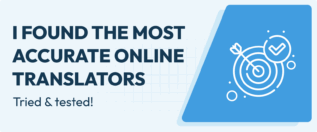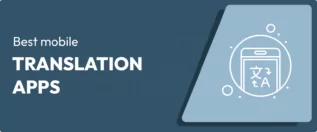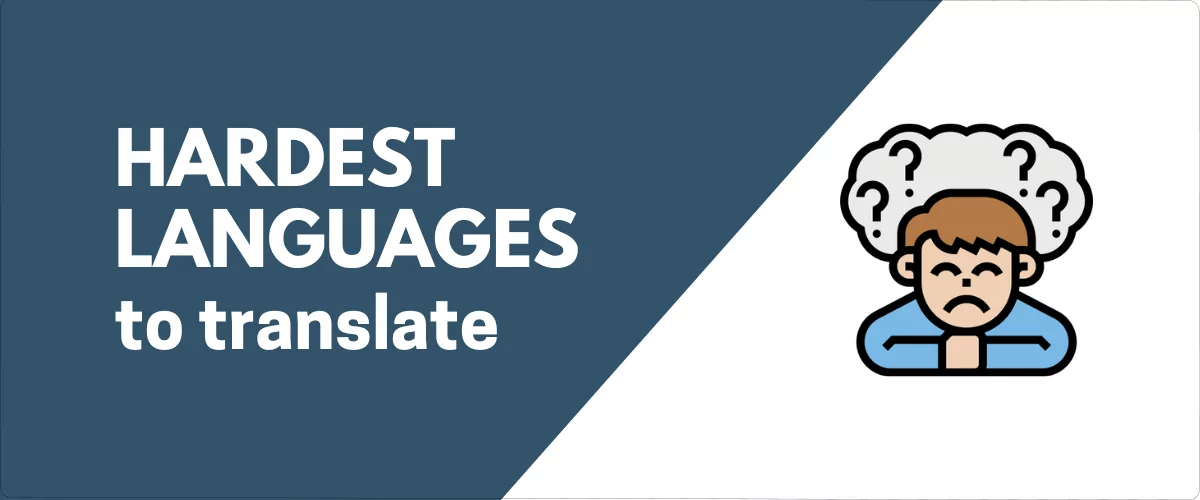
In this post
The hardest language to translate always seems to be the one you are currently struggling with. However, some languages are indeed objectively tougher to convert to and from, even if you are fluent in both the source and target language.
This can create some quite practical problems. Whether you are trying to translate your homepage, a contract, or anything else, it impacts the effort, time, attention, and also often price that goes into it. More difficult languages have fewer translators, which means rates can be higher. Plus, even machine translation services struggle with some languages more than others.
If want to translate your website to compete in an international market, it’s best to know which languages can give you the most trouble. That way, you are able to decide whether or not the effort is worth it.
So, what are the most difficult languages to translate and what makes them so challenging? Let’s find out together.
Elements That Make Languages Problematic to Translate
As a first step, let’s talk about why certain languages are harder to convert than others.
Different Language Roots
One of most important considerations here is the language root. There are about 7,100 different languages in the world, which have been divided into 135 language families.
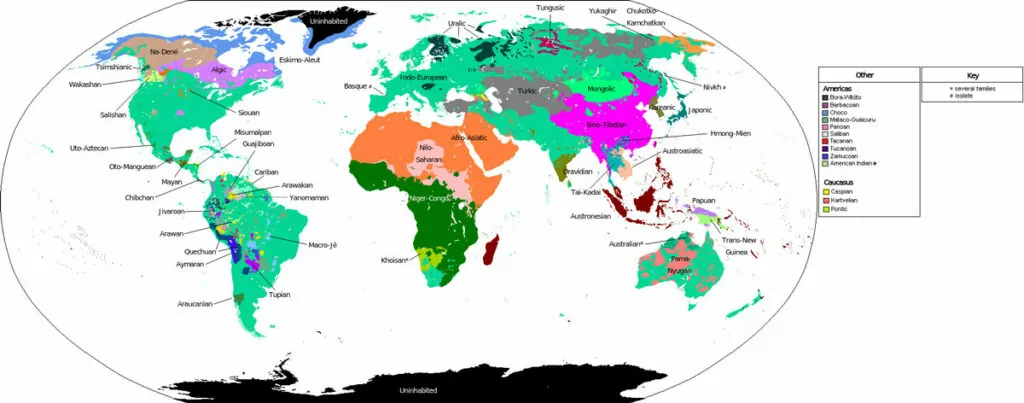
In addition, you have some language isolates that evolved outside of these families, some of which we will get to know below.
Why does this matter?
Because languages with the same root usually share a lot of similarities. Their grammar and syntax is similar, there are more word correlations, and even some shared cultural influences. All of that makes them much easier to translate in between each other.
On the flipside, of course, the further apart two languages are, the more challenging it can be to translate between them. It requires a lot more word rearrangement to fit the same meaning into different syntax systems.
Vocabulary Size
Another common difference between languages is the number of words that are available in them. While, because of the evolving nature of languages, it’s hard to pinpoint the exact size of different vocabularies, we can look at dictionary size as a proxy.
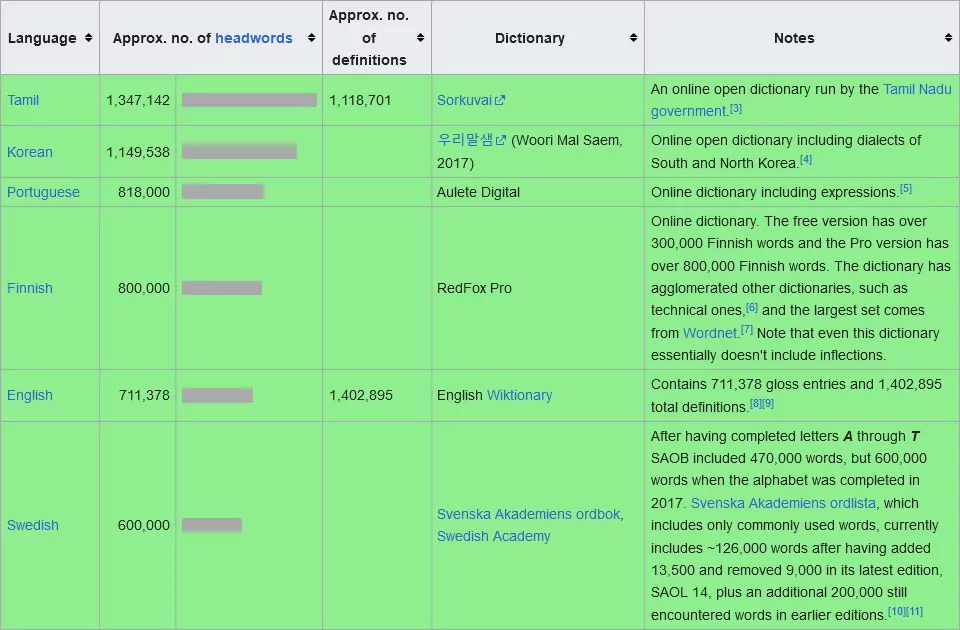
English’s dictionary has over 700,000 words, while German is at only about 330,000. That means, English has a lot more words available to say the same thing. It can also express itself with more nuance. So, if you wanted to translate English into German, you might run into difficulties finding the exact equivalent. This is a common thing that makes translation difficult.
Other Problems
Aside from that, there are general translation problems we already covered on this blog, such as:
- Preserving the tone of the original content, especially in literary translation.
- Homonyms where words can have the same spelling but different meaning and pronunciation. This can especially make translating written text difficult.
- Cultural considerations, such as translating idioms, expressions, slang, or humor.
5 Hardest Languages to Translate (And Why They Are Difficult)
Taking the above into account, which languages are the most difficult to transform into others? While it’s hard to say that with absolute certainty, here are a number of worthy contenders.
1. Mandarin Chinese
By number of speakers, Mandarin is the most common language in the world. About 1.39 billion people converse in it, mostly in mainland China, where it is the official language. However, you also find Mandarin speakers in countries with significant Chinese population like the USA or Australia.
One thing that makes it very different from Western languages is that it’s a tone language. That means, depending on how you pronounce the same syllable, it can have very different meanings.
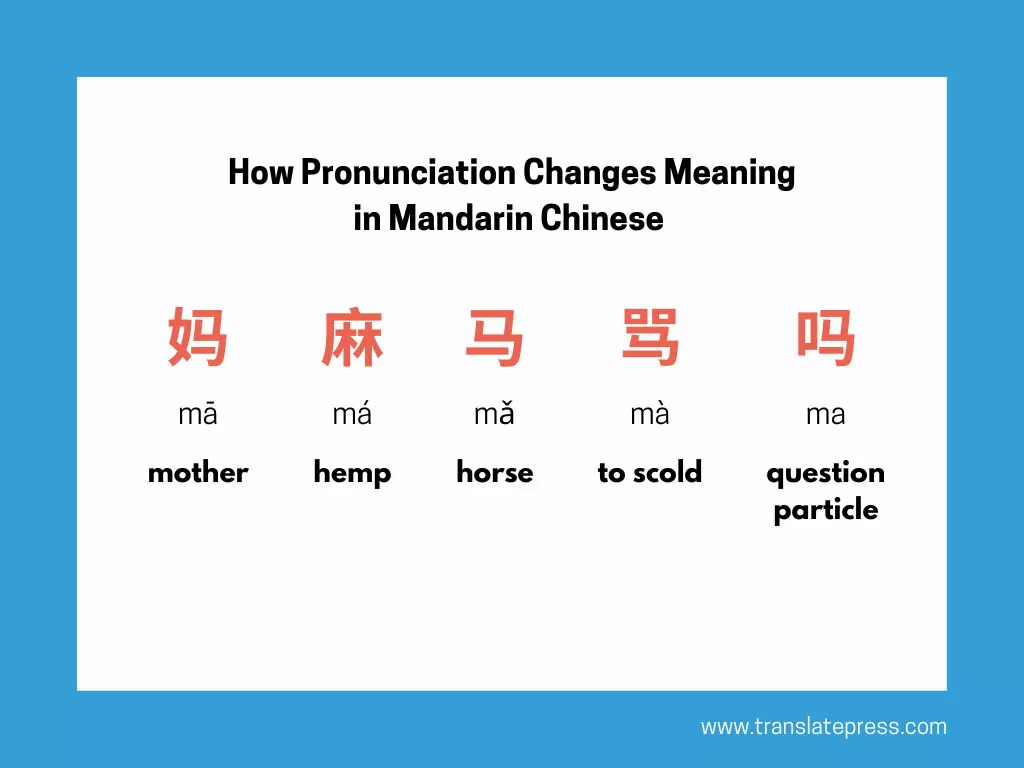
This is one of the hardest things for Chinese learners to get used to.
In addition, as you can already see above, Chinese doesn’t use an alphabet. Instead, it has a system of written characters, each of which represents a word. You can also combine them to form new words.
So, this language is very different from many others from the get-go.
Why Is Mandarin Chinese Hard to Translate?
The main thing that contributes to difficulties in translating Chinese is the sheer number of characters. In English, you have an alphabet of 26 letters out of which can basically put together every single English word in existence. If you know them, you are pretty much literate.
Mandarin Chinese, on the other hand, has 50,000-80,000 characters (depending on who you talk to), each with its own meaning and sometimes very subtle differences.
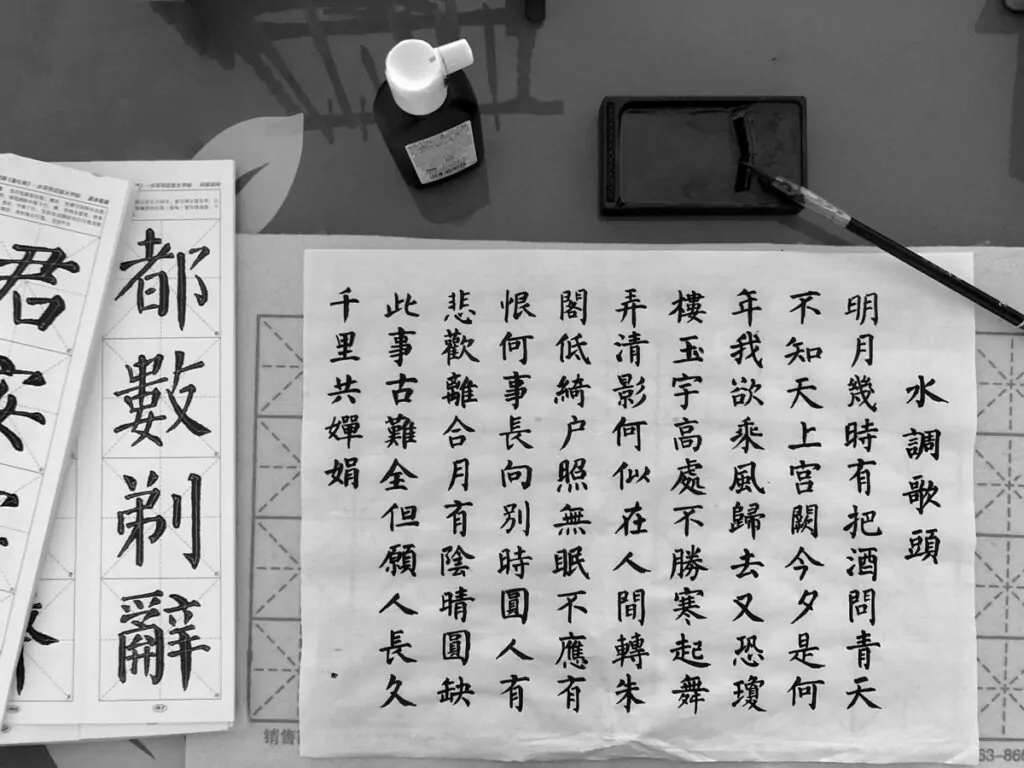
As a consequence, just to be considered literate in Chinese, you need to know about 2,500-4,000 characters. Quite a few more than 26, isn’t it?
Plus, characters often have multiple meanings and can frequently take on different grammatical functions. For example, among other things, the character “好” (hǎo) can mean “good/friendly/healthy” (adjective), “to recover/to get better” (verb), “very/quite” (adverb), or “words of praise” (noun).
What makes this even more difficult is the fact that there are traditional and simplified characters, which can look quite different from each other.
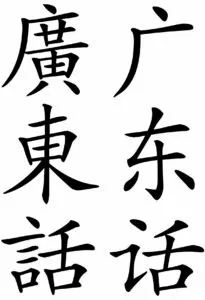
Furthermore, there are additional features that make Mandarin one of the hardest languages to translate:
- It doesn’t have inflections, so you have to understand tense from context.
- Mandarin has complex grammatical rules that are very different from Western languages.
- Chinese also has many idioms, for which you need cultural understanding to correctly transpose them. For an example, look up why Chinese people might mention an old man who lost his horse when they want to express that things might not be as bad as they seem.
- The language is rich in homophones, which makes translating spoken Chinese challenging.
From the above, you can probably guess that it takes a lot longer to even get to a place where you can translate Mandarin Chinese and you can understand why there are so many bad Chinese translations. To truly master the language, you could spend a lifetime.
2. Korean
We are continuing with another Asian language. Korean is the most spoken language isolate, about 80 million people use it as their mother tongue. Since it evolved mostly without influence from other languages, it has some unique characteristics.
Like other Asian languages, Korean uses its own writing system. However, unlike Chinese, it’s more like an alphabet. It uses 24 basic letters, 14 consonants and 10 vowels, and there are 27 complex letters you can create by combining the basic letters.
Original image source: Ryan Estrada
Difficulties in Translating Korean
Besides having to know an entirely different alphabet, one of the main troubles in translating Korean stems from its unique grammatical structure. It uses a Subject-Object-Verb (SOV) syntax that can get very complex in longer sentences.
In addition, it has many particles that denote meaning and grammatical function. Plus, like other languages, Korean has lots of homonyms that spell and sound the same but have different meanings.
There are also a number of cultural considerations to take into account. Korean has a strong language hierarchy, meaning different levels of formality and politeness that translations need to observe. This can be especially tricky in transcreation and localization or marketing translation.
Another thing that puts it among the hardest languages to translate is its sheer number of words. In the list of the largest dictionaries above, Korean is in second place with over a million words. This richness often makes word-for-word translation impossible and you need to approximate the meaning.
Plus, you can find many words that have no direct equivalent in other languages. An example is “정,” which expresses the emotional connection and affection you develop for people in your lives over time. It can exist between family, friends, coworkers, even places or objects, making it hard to translate.
Finally, like Chinese, Korean has many idioms, contributing to its difficulty. For instance, if you want to say something is very easy or “a piece of cake” in Korean, you could say it’s like “eating rice porridge gone cold” (식은 죽 먹기).
3. Arabic
Arabic is spoken in 25 countries from Morocco to Egypt, Saudi Arabia, and the United Arab Emirates.
What’s surprising to hear is that many of these countries speak their own version of the language. While there is a standardized variant (Modern Standard Arabic or MSA) used for print, media, formal speech, legislation, etc., most users of Arabic speak their own local dialect. These can be so different from each other that they are often mutually unintelligible. Overall there are about 360 million native speakers of all varieties and 270 million who speak MSA as a second language.
Arabic also uses its own writing system in the form of an alphabet with 28 letters and text runs from right to left.
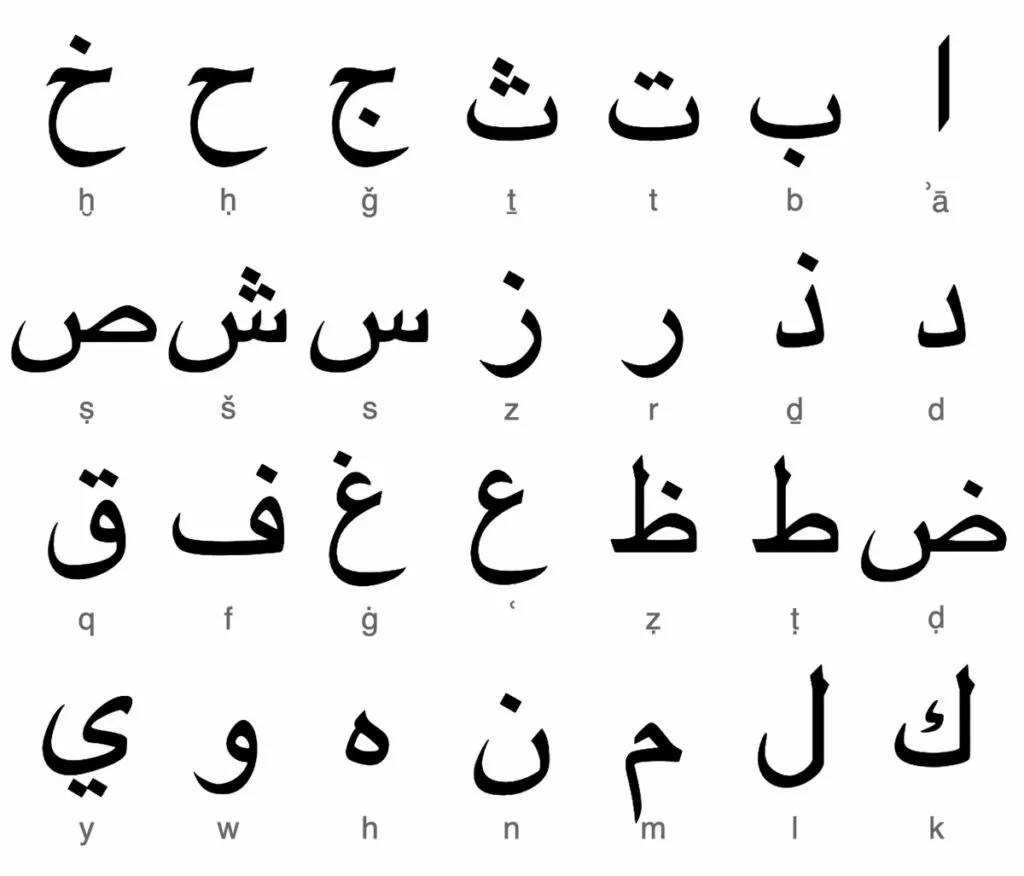
What Makes Arabic Difficult?
The number of dialects and the fact that they are very different from each other is one of the main factors that make Arabic hard to translate. If you are not familiar with a particular dialect, it’s very easy to get the meaning wrong.
In addition, Arabic is said to have a large vocabulary—some even claim there are 12 million Arabic words. While there are no verified sources for that, with so many dialects, it does make sense that there would be a large number of unique words existing apart from each other.
However, even the standardized Modern Standard Arabic poses a challenge to translate. One reason for that is that verb conjugation does not just happen for tense but also for gender, number (singular, dual, plural), and aspect.
On top of that, Arabic not only uses its own alphabet, the letters can also be very similar and hard to distinguish. Plus, the written language only includes consonants, not vowels, upping the difficulty even more. In addition, each letter has several writing forms depending on where it appears in a word.
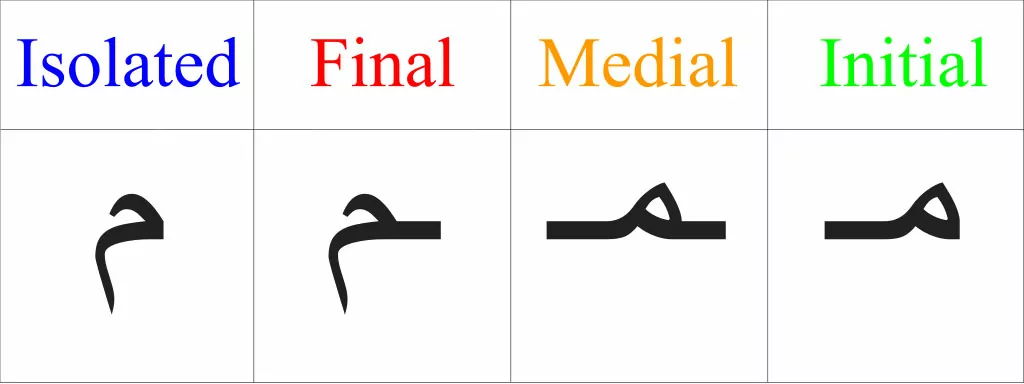
Finally, in website translation, the fact that Arabic runs from right to left can cause problems for website layout and design.
4. Thai
Thai is the official language of Thailand. It is basically spoken only in a single country but by over 69 million people. Thai evolved without influence from Western languages and borrows from other Asian countries. Because of that, it has few commonalities with languages like English.
Thai is also a tone language. You can pronounce words five different ways and, like in Chinese, the meaning changes depending on how you articulate it. Example:
- คาว (kao) – mid tone – “fishy” or “raw meat smell”
- ข่าว (khàao) – low tone – “news”
- เข่า (kào) – falling tone – “knee”
- เค้า (kháo) – high tone – “he/she” (informal or slang)
- เขา (khǎo) – rising tone – “he” or “mountain” (depends on context)
In addition, Thai uses its own writing system with 44 consonant and 16 vowel symbols.

The latter combine into 32 different vowels. Thai also uses many types of diacritical marks above, below, before, and after consonants to indicate tone.
In What Way is Thai Hard to Translate?
Its nature as a tone language with its own writing system already qualifies Thai as one of the hardest languages to translate. However, there are some extra factors that increase its difficulty.
For example, the language has no articles, so you need to understand the number of nouns from context. It also doesn’t place spaces between words and there are no full stops between sentences. Instead, a single space denotes the end of a sentence. In addition, there are no upper and lower cases.
Thai also has a unique syntax, for example, adverbs and adjectives appear after the words they modify. Plus, like other Asian languages, it has different levels of formality. All of this doesn’t make it easy on translators.
5. Hungarian
The final entry on our list of the hardest languages to translate is Hungarian. It is the language of choice for 17 million people in the world, mostly in Hungary and several neighboring countries such as Austria, Serbia, Croatia, and Ukraine. Hungarian is also one of the official languages of the European Union.
Unlike other entries on this list, the language uses the Latin alphabet, however, extended with some additional letters to denote some of its unique sounds.

What Makes Hungarian So Difficult?
The main reason why Hungarian made this list is its grammar. It’s known to be a language with one of the most complex grammar rules out there.
The language has 14-35 different cases (again, depending on who you ask) and uses a lot of suffixes, for example, to determine tense and possession. At the same time, it only has two tenses and you need to look to sentence context to understand more complex temporal relationships, like so:
- Találkozunk – “We meet”
- Holnap találkozunk – “We will meet tomorrow” (literally: “We meet tomorrow”)
- Tegnap találkoztunk – “We met yesterday” (here, the verb changes)
In addition, Hungarian has fourteen vowels with different accents that can change their meaning. It also uses a lot of idioms that you have to be culturally adept enough to understand. All of this makes it hard to learn and translate.
Other Difficult-to-Translate Languages
Besides the five above, here are a few runner-ups for the hardest language to translate:
- Japanese — Japan’s official language has four different writing systems (kanji, hiragana, katakana, romaji), its own sentence structure, only two tenses, and different levels of politeness to observe. And those are just a few of the reasons why it’s challenging to translate Japanese.
- Finnish — Part of one of the smallest language families, Finnish is hard to translate because it uses a lot of colloquial speech. Consequently, spoken words are often different from written language. There is also no future tense but, on the other hand, 15 grammatical cases.
- Mongolian — A mix of Chinese, Russian, and Finnish, Mongolian uses the Cyrillic alphabet with some extra characters and is generally very hard to learn for English speakers.
- Polish — 14 declensions, seven cases, a free word order that is not bound to common sentence structure, a complicated gender system, and consonant clusters (e.g. “Wstrząs,” meaning “shock”) that make it hard to pronounce—do we need to say more?
- Icelandic — Spoken by fewer than 400,000 people and almost unchanged since the 9th century, Icelandic has very complex grammar, a unique vocabulary, and very few loanwords that could help you out.
What Is the Hardest Language for Google Translate?
The above are some of the hardest languages to translate for human translators. The question is, is it the same for machine translation software like Google Translate?
While Google itself does not publish any data on which languages its translation software is best and worst at, there have been numerous studies on this topic that we can turn to to get a better idea.
Study Findings
A Preply study from 2023 looked at Google Translate’s accuracy in translating to different European languages. Their findings were that it’s best at translating into English and less accurate in the other three languages they examined. Apparently, the service especially struggles with idioms and expressions.
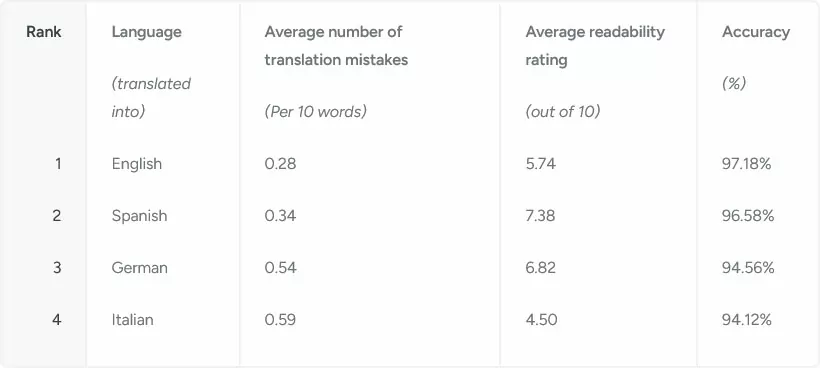
Another study looked at Google Translate as a tool for conveying medical instructions to patients in different languages. Twenty volunteers evaluated 400 translated discharge statements translated with the machine translation services.

They found that Spanish had the highest accuracy rate (94%), followed by Tagalog (90%), Korean (82.5%), Chinese (81.7%), Farsi (67.5%), and Armenian (55%). Overall, the translation accuracy was satisfactory at 82.5%, however, you can see that it dramatically decreased for less common languages.
Next up is the 2019 update to a study originally from 2011. They examined 2,550 language pair combinations and found that translations between English and German, Afrikaans, Portuguese, Spanish, Danish, Greek, Polish, Hungarian, Finnish, and Chinese tend to be the most accurate.
Yet another study translated 20 English phrases to the 102 non-English languages supported by Google Translate at the time. Fluent speakers of these languages evaluated the translations for accuracy. Here are those in which Google Translate did the best:
- Afrikaans
- German
- Portuguese
- Spanish
- Polish
- Chinese
- Croatian
- Dutch
- Galician
- Greek
- Italian
- Latvian
At the same time, translations of Bengali, Haitian Creole, and Tajik failed 100% of the time. In addition, languages at which Google Translate failed 80% or more of the time were Kurdish, Nepali, Latin, Malaysian, Urdu, Maori, Cebuano, Georgian, Persian, Punjabi, and Uzbek.
Finally, one study looked at the translation accuracy of ten medical phrases across 26 languages. Here, African languages scored lowest (45% correct), followed by Asian languages (46%), and Eastern European languages (62%). Western European languages were most accurate at 74%. Swahili scored the lowest with only 10% correct, while Portuguese scored highest at 90%.
These Results Are Not That Surprising
Are the outcomes above expected? Well, maybe a little if you know how Google Translate works. The machine language service improves its capabilities by examining multilingual content online. While at the beginning it used statistical machine translation, it now works with AI and machine learning. However, Google Translate still uses real-life online content as training data.
If you look at the most common languages on the Internet, you can see that English is by far in the pole position. Therefore, it’s no surprise that it’s Google Translate’s best language to translate into. The translation service likely simply knows more about this language than any other.
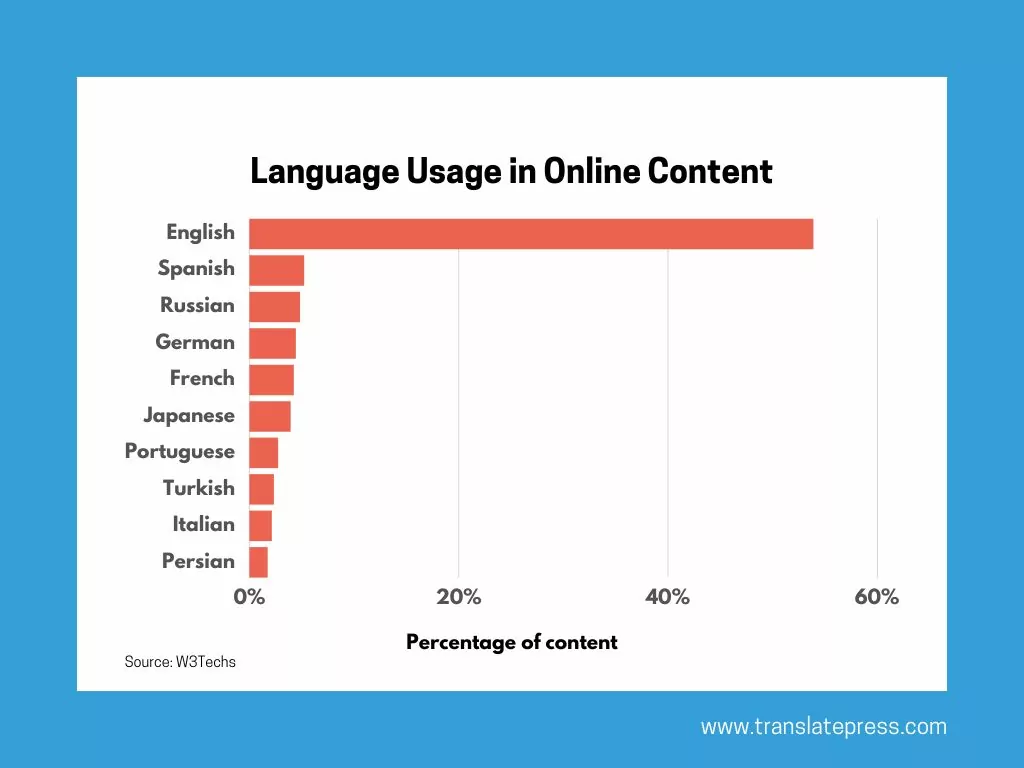
That also explains why it finds less common languages the hardest to translate. There is fewer training data for those.
It’s Not Just Google Translate
You can observe similar discrepancies in other machine translation tools, including those powered by artificial intelligence. A 2024 study compared Google Translate and ChatGPT in their ability to translate medical instructions and patient information from English into three languages. ChatGPT’s translation was incorrect in 3.8% of the sentences in Spanish, 35.6% in Russian, and 24.2% in Vietnamese.
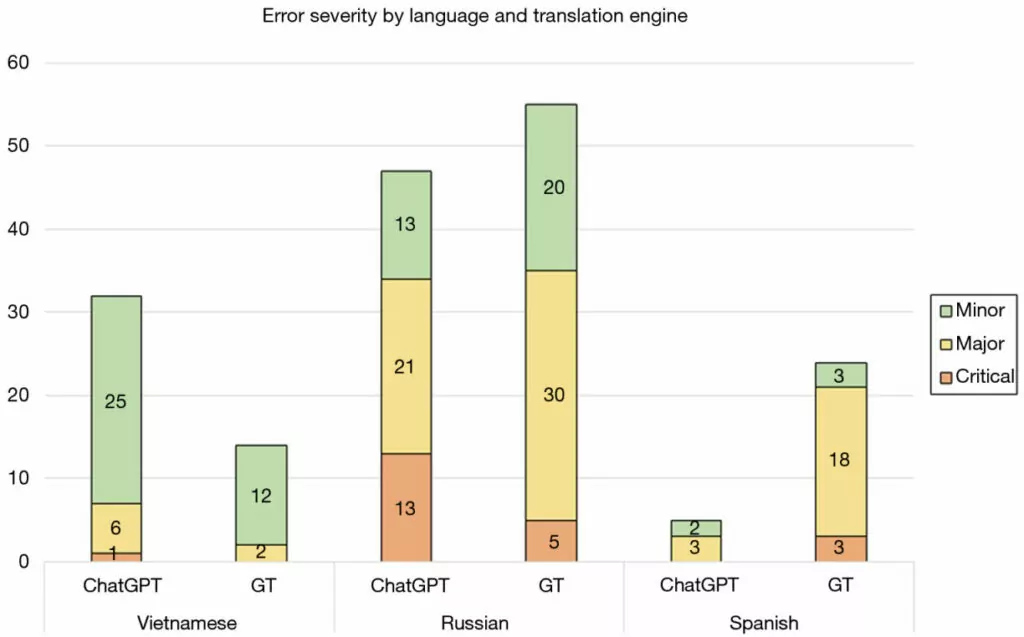
Like Google Translate, it performed best in the language closest to English and with the most available training data.
Another study from 2024 tested the translation abilities of popular large language models (LLMs). The study had them translate text into English and Chinese from 18 different languages as well as English and Chinese into each other. It found some marked differences in translation quality scores.
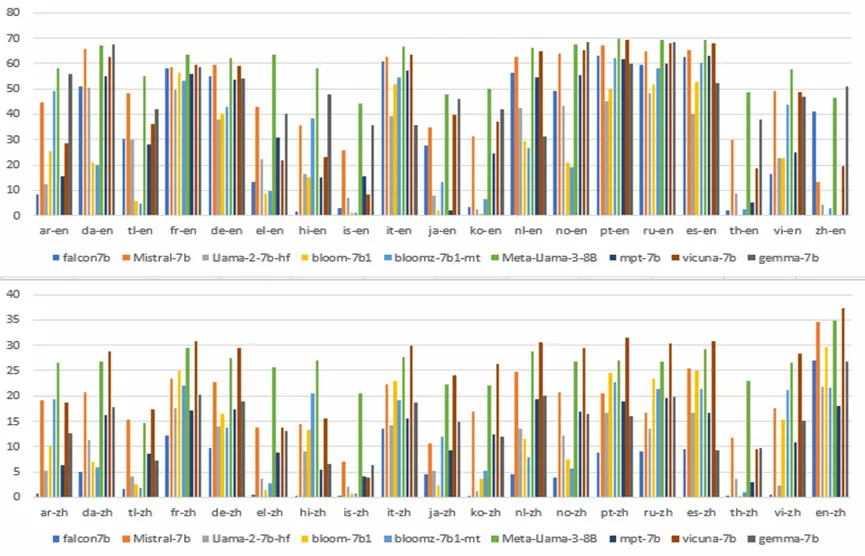
Results were worst in many of the languages already discussed as hardest to translate, including Arabic, Japanese, Korean, Thai, and Chinese when converting into English. In addition, the language models struggled with Tagalog, Greek, Hindi, and Icelandic, while the European language pairs all scored relatively high. Outcomes were similar for translations into Chinese, with lower accuracy scores overall.
Hardest English Words to Translate
Just because it didn’t make the list of the hardest languages to translate, that doesn’t mean English is always a peach to work with. As a bonus section, let’s look at some of the words the English language has to offer that aren’t easy to translate either.
Put
“Put” seems like a simple word. However, its difficulty comes from the fact that can take on so many roles:
- to put something on the shelf
- to put something off
- to put yourself in a situation
In other languages, you don’t often have a word that is so universal. You have to use more distinct words like “to place”, “to lay”, etc. That makes “put” surprisingly hard to translate one-to-one.
Free
Another word that you wouldn’t necessarily think is hard to convert into another language is “free”. However, here, too, you have the problem that it can take on a range of meanings:
- to be free of cost
- to be free from captivity
- to have time
- to be unburdened
You get the picture. In other languages, you have separate words for those things, in English only one.
Awkward
This is another one of English’s hardest words to translate.
Why?
Because it frequently doesn’t have an equivalent. You are left having to describe it. And how do you describe awkward without using the word itself?
Y’all’d’ve
That’s not really a word but more like a phrase pressed into one. In case you are not familiar with it, the above means “you all would have.” A phrase that, in itself, is perfectly translatable, however, how do you display the condensed version in another tongue? If you have proposals, leave them in the comments!
Ghosting
The final example of the hardest English words to translate is “ghosting”. It describes the process when someone cuts another person out of their life without letting that person know. They simply stop contacting them and fade from their life. The word was first used for dating apps, where people can often display this behavior.
Languages Can Be Hard to Translate, But Translating Your WordPress Website Shouldn’t Be
As we have seen, it can be really difficult for some languages to convert from and to another. When you are trying to implement one or more of them on your WordPress website, the last thing you want to do is struggle with the technical aspects of it. For that reason, we want to take a second to talk about how our plugin TranslatePress makes it really easy.
Use Automatic Translation to Speed Up the Process
As we have seen, even machine translation struggles with some of the hardest languages out there. However, it can still be a great tool to save time, effort, and money.
With TranslatePress, using automatic translation is very convenient, especially if you use TranslatePress AI. It’s part of every TranslatePress license and you can use it with AI credits available through your account.
Here’s how it works: Simply install the plugin and define your site’s default language as well as at least one target language in Settings → TranslatePress.
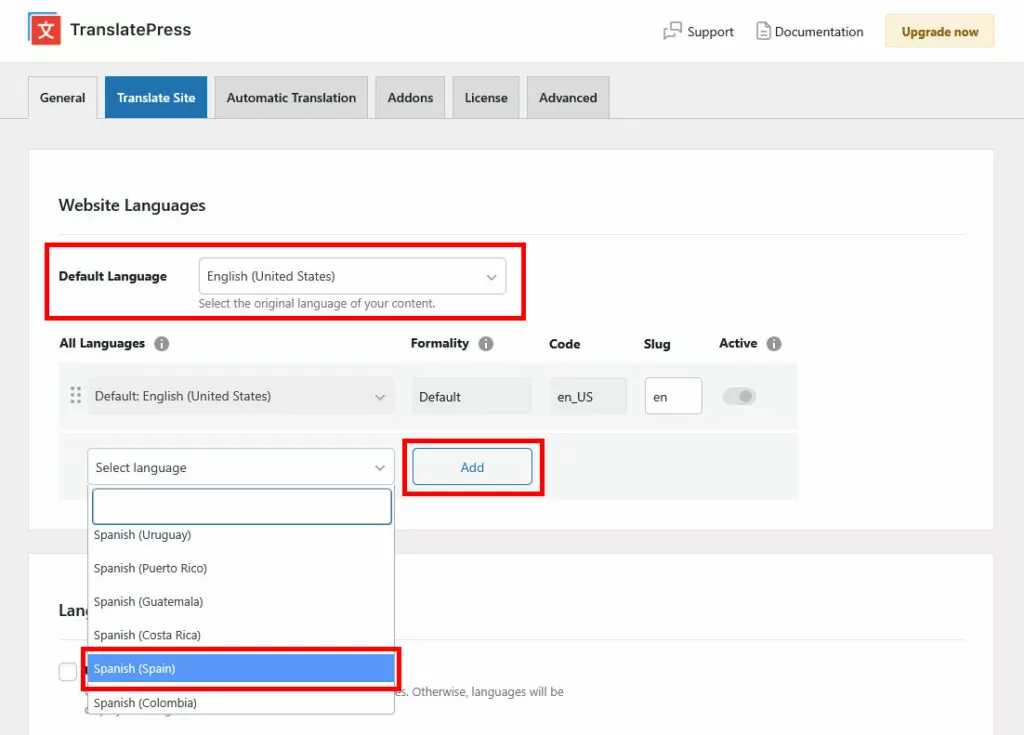
After that, head over to the Automatic Translation tab and switch the drop-down menu under Enable Automatic Translation to Yes. Save your changes at the bottom.
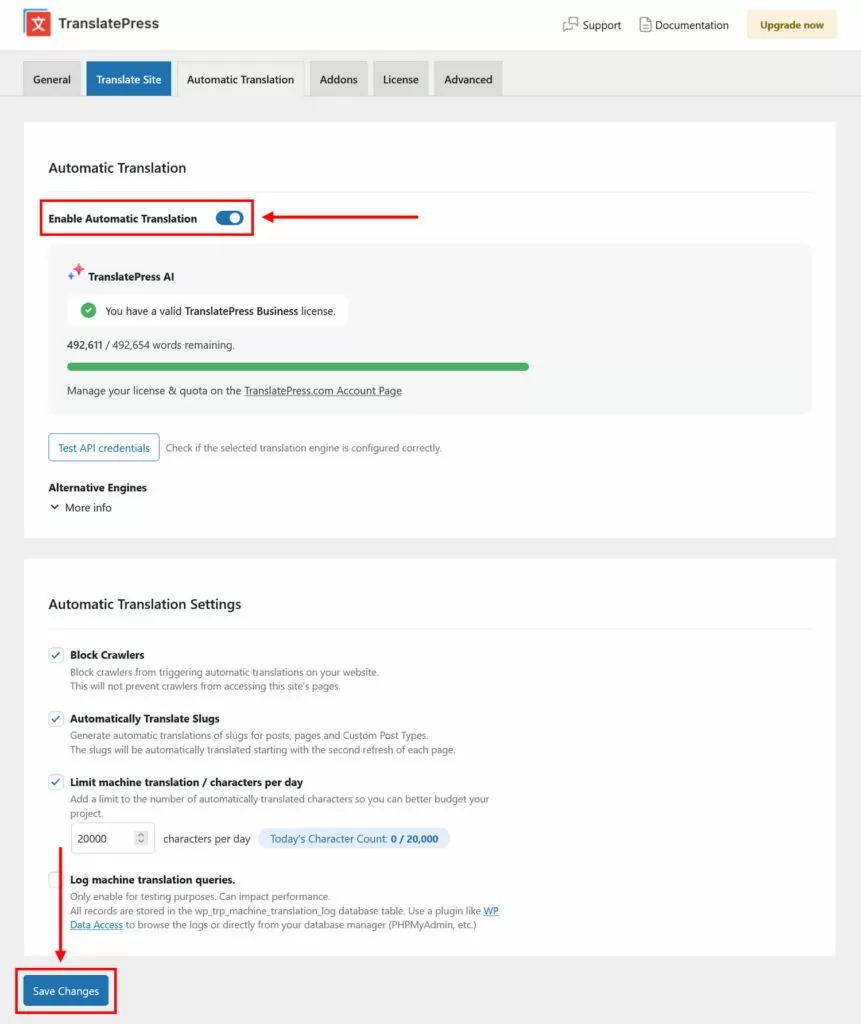
TranslatePress will immediately and automatically start converting your website to your target language(s). In fact, when you use the language switcher in the front end of your website, the translation is already done.
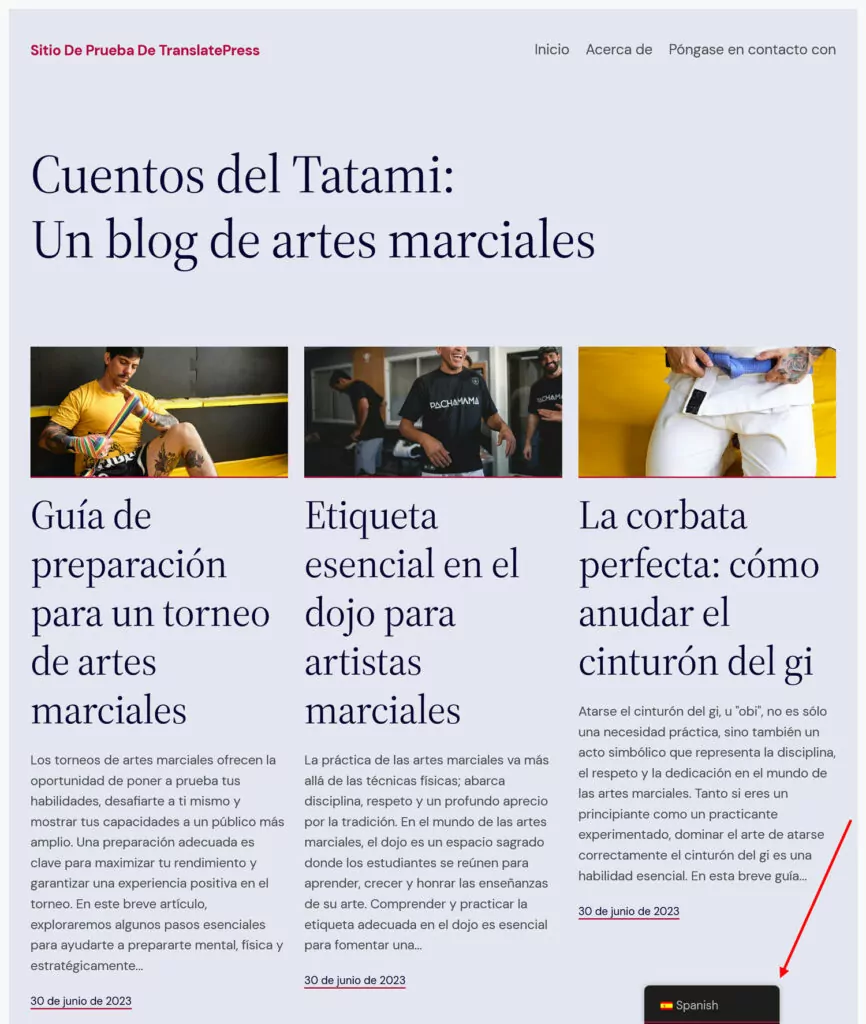
To ensure the best translation quality, TranslatePress AI utilizes several sources for its machine translation. It automatically picks the most appropriate for your pair of languages, even if they are among the hardest to translate.
In addition to that, you can also choose to use Google Translate or DeepL in the settings.

But be aware that you need to acquire an API key for either of these 2 services if you want to use them. We have instructions for that here:
Fine Tune Translations and Translate Images by Hand
When you are translating your site into or from an especially difficult language, you want to make sure you can make manual adjustments in case you spot inaccuracies.
In TranslatePress, you can do that and also translate your entire website by hand when you click on Translate Site/Page in the TranslatePress settings or the WordPress admin bar.

Simply pick your desired content from the preview window in the translation interface you land on and enter or edit its translation in the sidebar. Then save at the top or via Cmd/Ctrl+S.
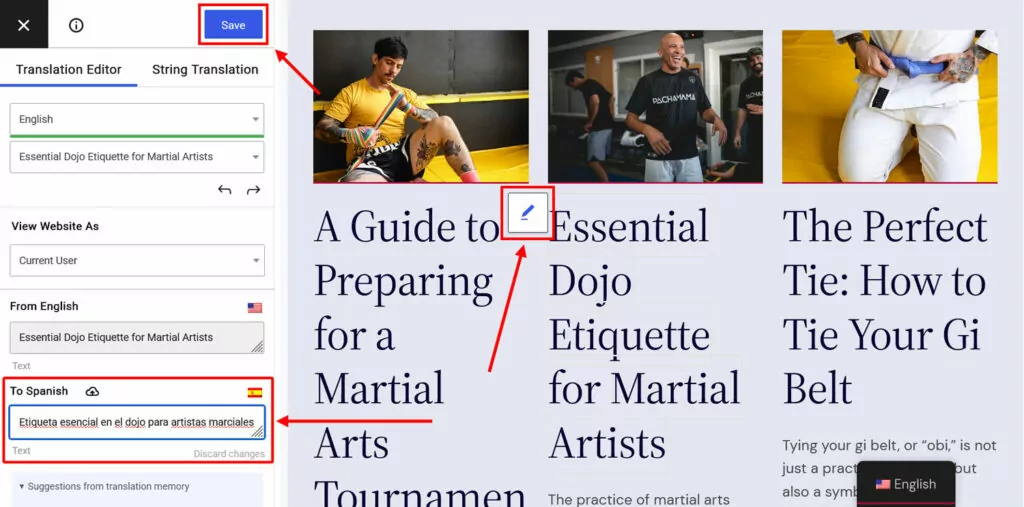
You can also use the preview window to navigate to other pages and have the option to translate images, too. Just select a visual from the interface and then provide an alternative on the left. Save and you are done.
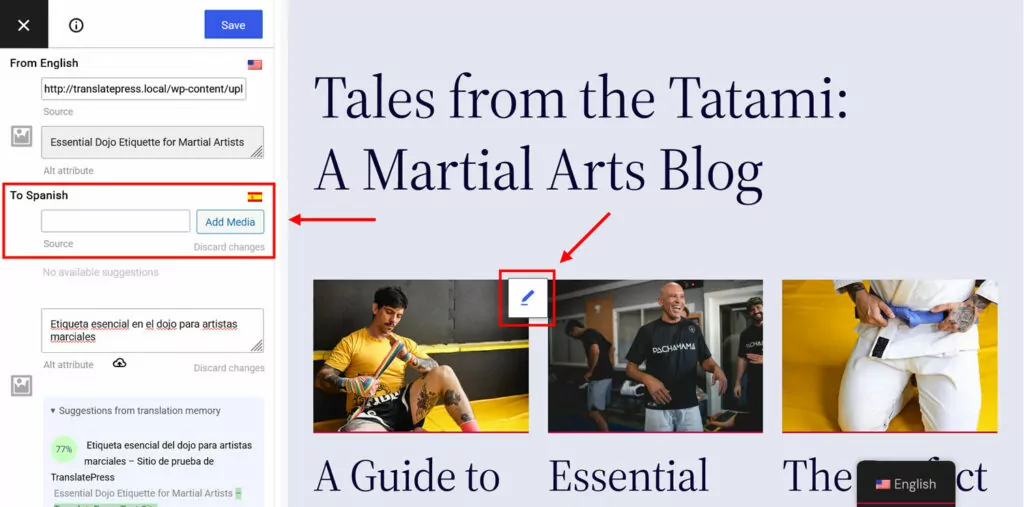
Multilingual SEO for Search Engine Success
Besides helping you translate your site, TranslatePress also supports you in appearing prominently in search results—even for difficult languages. For one, it automatically implements hreflang tags to mark the language and locale of your pages. That way, they will have an easier time ranking for the right audience and location.
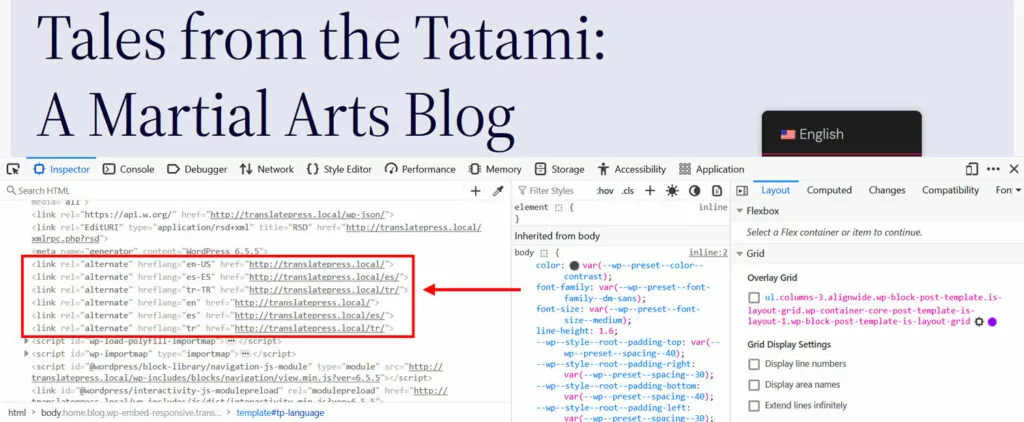
In addition, TranslatePress Pro comes with a multilingual SEO pack. With it, you can translate your page URLs, SEO titles, meta descriptions, ALT tags, and other important SEO markers.

In fact, if you use one of the mentioned machine translation options, they will translate this information as well. Plus, you still have the ability to manually refine it like the rest of your content. The SEO Pack also creates multilingual sitemaps and works with most of the popular WordPress SEO plugins.
Start With the Free Plugin
TranslatePress comes in both a free and paid version with three different pricing plans. The free version allows you to equip your WordPress site with one additional language. If you want access to the SEO Pack and automatic translation with DeepL, these are included in TranslatePress Pro in addition to these features:
- Browse as user role – Look at your site as a specific user role in the translation editor.
- User language-specific navigation – Display different menus depending on user language.
- Automatic user language detection – Automatically show your website in a user’s preferred language (via browser settings or location).
- Translator accounts — Make working with translation agencies and freelancers easier by giving them access to your site so they can translate your content directly there.
Here are the details of the paid plans:
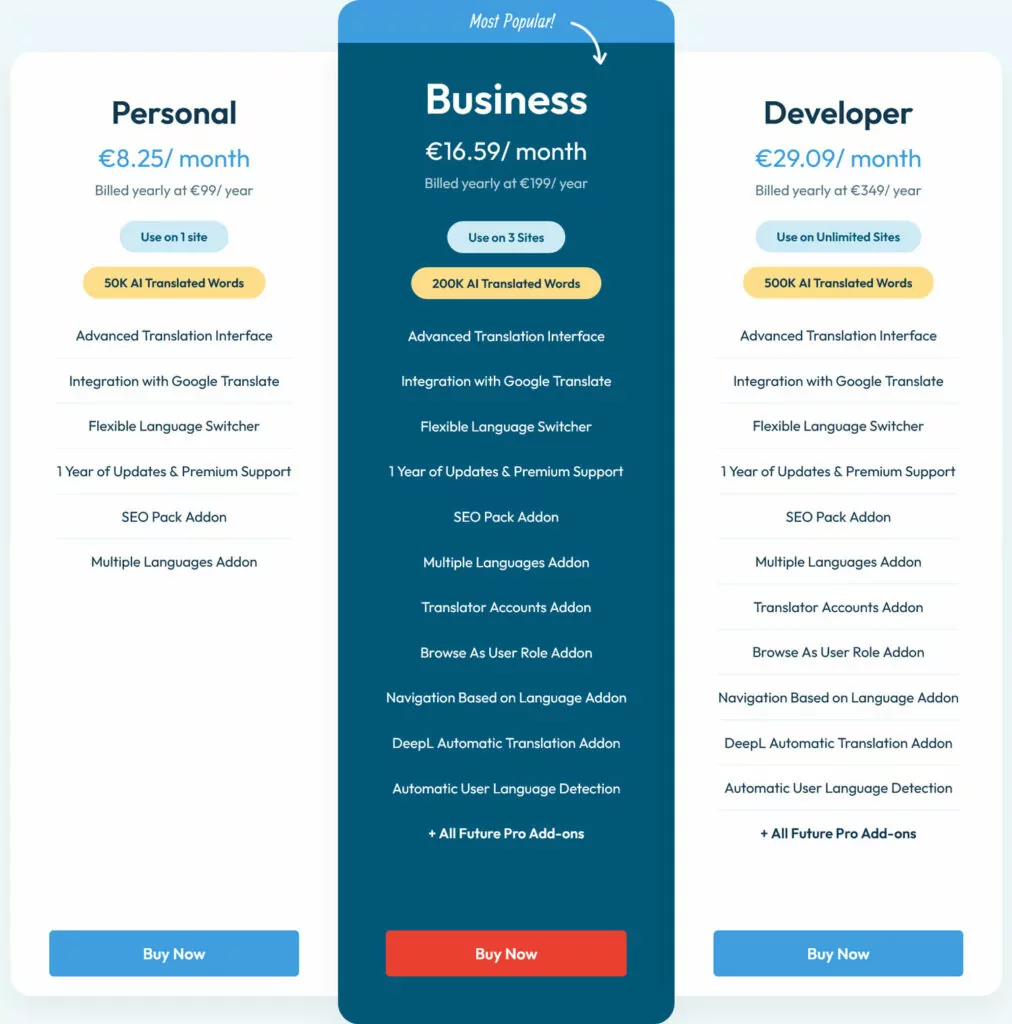
So, What Is the Hardest Language to Translate?
Translation really is no easy feat. It’s difficult enough on its own to preserve the meaning of the source material in another language. However, some languages make it especially challenging.
In this post, we have talked about some of the hardest languages for translating. Their grammar, the size of their vocabulary, and other intricacies make them especially difficult for translators to convert.
Luckily humans are not alone in these struggles. Machine translation services like Google Translate also fare better with certain languages than others and, if you think about it, often for similar reasons.
However, even universal languages like English can pose a problem. As we have learned above, English, too, contains words that are hard to translate.
So, what do we learn? If you are thinking about translating your website into one of these languages and run into problems, it’s not you, it’s simply difficult. So don’t make your life even harder and use TranslatePress to get the job done.
TranslatePress Multilingual
What languages do you find the hardest to translate? Let us know in the comments below!

